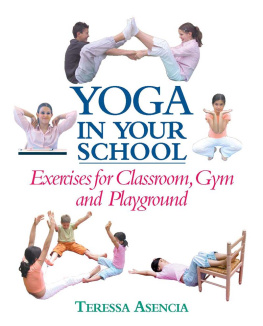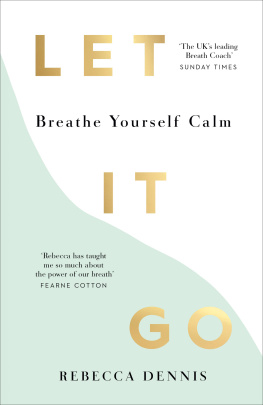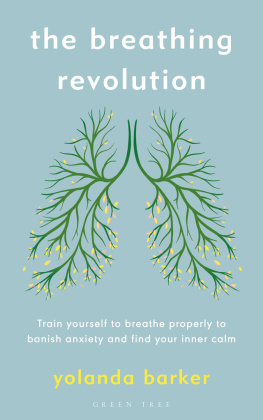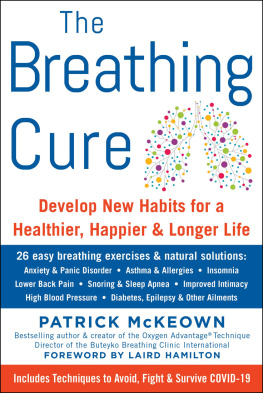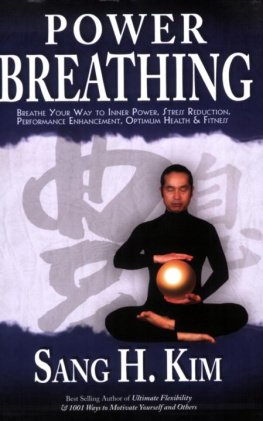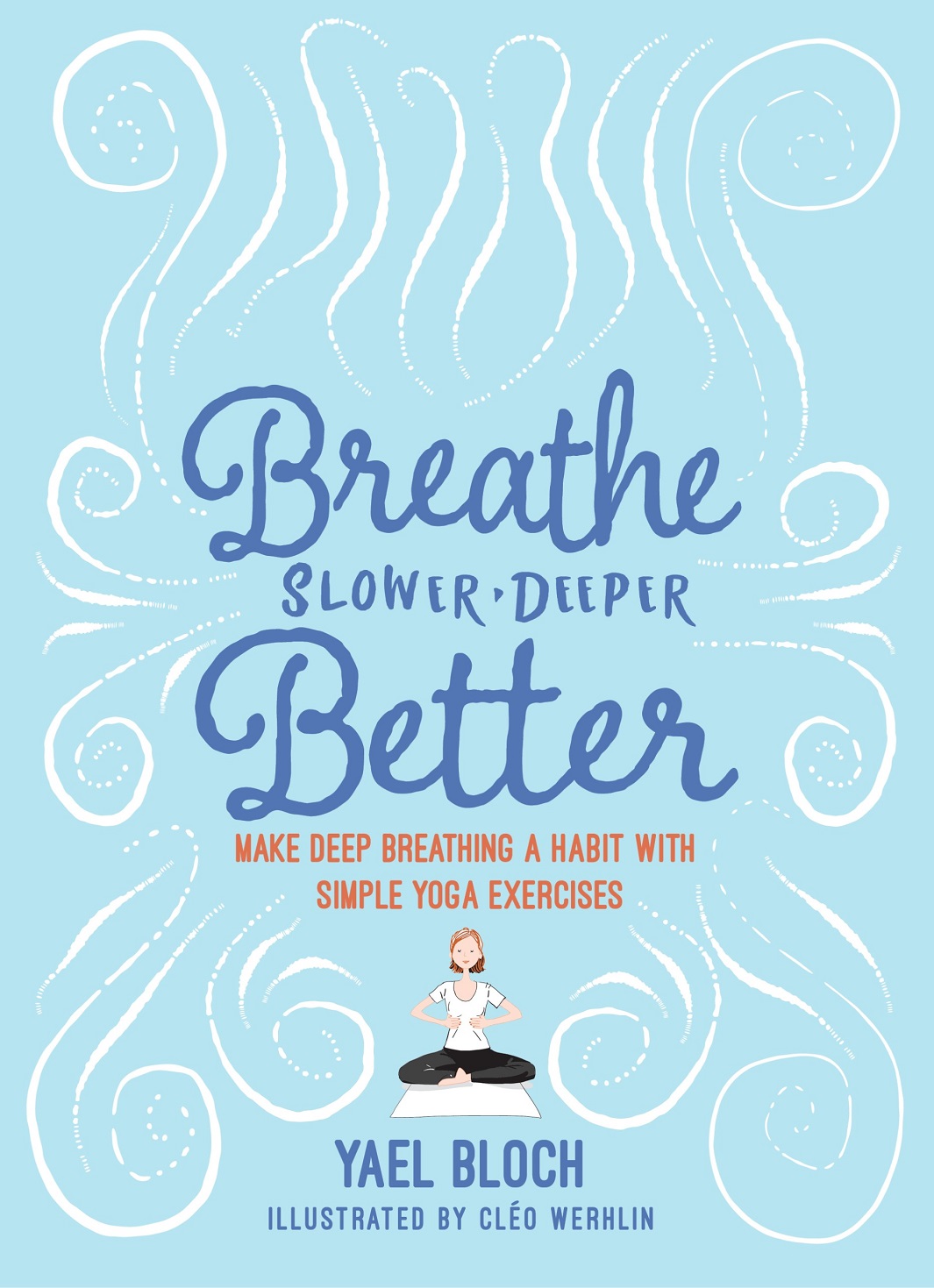
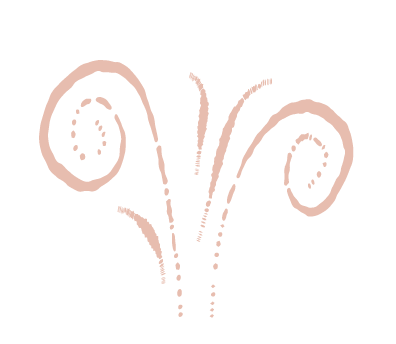
Acknowledgments
Im immensely grateful to my yoga instructors for their teachings, and to EFY and FNEY for the wealth of knowledge and wellness practices in which they immerse their students and members.
Im thinking of my main instructor, Jean-Pierre Laffez, in particular, and of Andre Maman, both of whom were always available to answer any questions I had and had an active role in this work.
Warm thanks to the cardiologist Guy Taeb, who invested his generosity, competence, and pedagogical talent in this project by reading and rereading, clarifying points that remained unclear, and improving the text overall.
Thanks to Laetitia Motard for our conversations on this subject and for her encouragement, and to Ghislaine Gasper and Catherine Ciprut for their advice.
Im grateful to my husband, my first loyal reader, for his sharp, outside perspective. His assistance has always been precious to me. I owe to him a large part of the photos I used for the illustrations.
Finally, my gratitude goes to Laurence Auger, of ditions La Plage, for her trust.
EFY, cola Franaise de Yoga (French Yoga School), is affiliated with FNEY, the Fdration Nationale des Enseignants de Yoga (The National Federation of Yoga Instructors).
About the Author
YAEL BLOCH initially discovered yoga seeking relief from back pain. A former engineer, she began training as a yoga teacher in New York in 2001 and completed her training at the cole Franaise de Yoga in Paris. She has three children and lives in Bucharest, where she teaches yoga and meditation classes. She is a regular contributor to the French yoga journal Les Carnets du Yoga.
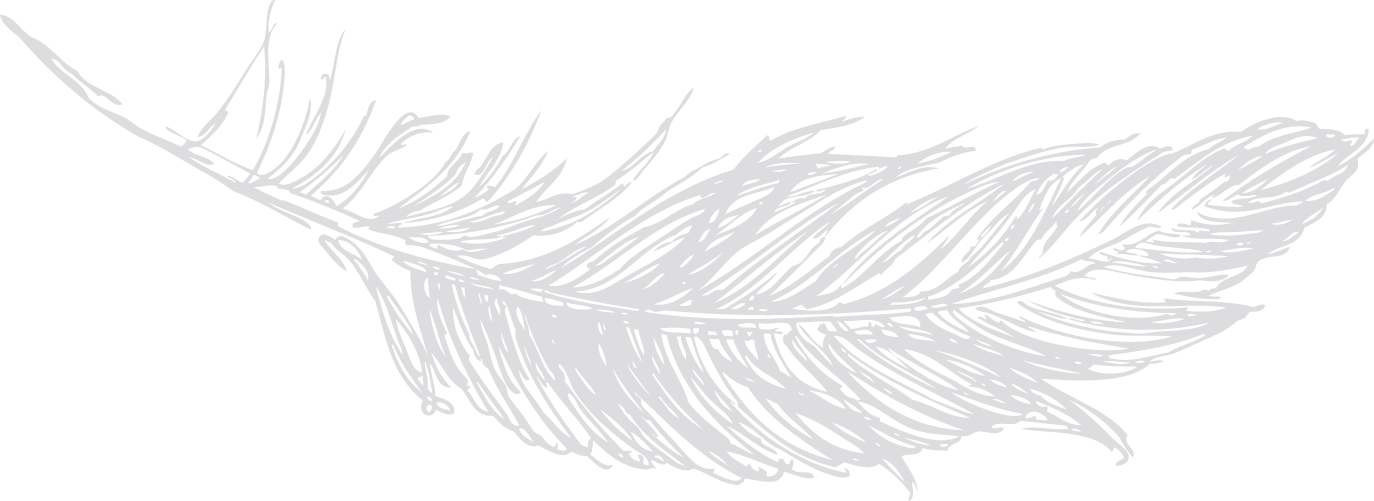

BREATHE SLOWER, DEEPER, BETTER: Make Deep Breathing a Habit with Simple Yoga Exercises
Copyright 2019 by Yael Bloch
Translation copyright 2019 by Julia Sanches
Illustrations copyright 2019 by Clo Werhlin
Originally published in France as Respire: Yoga, Meditation, Pleine Conscience by ditions La Plage in 2018. First published in North America in revised form by The Experiment, LLC, in 2019.
All rights reserved. Except for brief passages quoted in newspaper, magazine, radio, television, or online reviews, no portion of this book may be reproduced, distributed, or transmitted in any form or by any means, electronic or mechanical, including photocopying, recording, or information storage or retrieval system, without the prior written permission of the publisher.
The Experiment, LLC
220 East 23rd Street, Suite 600
New York, NY 10010-4658
theexperimentpublishing.com
This book contains the opinions and ideas of its author. It is intended to provide helpful and informative material on the subjects addressed in the book. It is sold with the understanding that the author and publisher are not engaged in rendering medical, health, or any other kind of personal professional services in the book. The author and publisher specifically disclaim all responsibility for any liability, loss, or riskpersonal or otherwisethat is incurred as a consequence, directly or indirectly, of the use and application of any of the contents of this book.
THE EXPERIMENT and its colophon are registered trademarks of The Experiment, LLC. Many of the designations used by manufacturers and sellers to distinguish their products are claimed as trademarks. Where those designations appear in this book and The Experiment was aware of a trademark claim, the designations have been capitalized.
The Experiments books are available at special discounts when purchased in bulk for premiums and sales promotions as well as for fund-raising or educational use. For details, contact us at .
Library of Congress Cataloging-in-Publication Data
Names: Bloch, Yael, author.
Title: Breathe slower, deeper, better : make deep breathing a habit with simple yoga exercises / Yael Bloch ; illustrated by Clo Werhlin ; translated by Julia Sanches.
Other titles: Respire. English
Description: New York : The Experiment, 2019.
Identifiers: LCCN 2019030649 (print) | LCCN 2019030650 (ebook) | ISBN
9781615195411 (trade paperback) | ISBN 9781615195992 (ebook)
Subjects: LCSH: Relaxation. | Meditation. | Yoga.
Classification: LCC RA785 .B5913 2017 (print) | LCC RA785 (ebook) | DDC 613/.192--dc23
LC record available at https://lccn.loc.gov/2019030649
LC ebook record available at https://lccn.loc.gov/2019030650
ISBN 978-1-61519-598-5
Ebook ISBN 978-1-61519-599-2
Cover and text design by Beth Bugler
Author photograph by Graldine Borderie
Manufactured in China
First printing October 2019
10 9 8 7 6 5 4 3 2 1

INTRODUCTION
I ts not unusual these days to hear someone tell a person whos stressed out to Breathe! Breathing is one of our most vital and basic processes. Because we do it without thinking, we tend to believe our bodies can breathe naturally. But theres breathing and then theres breathing. Natural breathing adapts itself to lifes circumstances and, more often than not, has already been altered by factors tied to our past experience (education, stress, pollution, illness). Weve developed breathing habits of varying efficiency, patterns we readily return to even while sleeping.
When we tell someone to breathe without any further instruction, they automatically and unconsciously breathe more deeply, but thats not necessarily the best or most appropriate response in a given situation.
That said, nothing is set in stone. According to one philosophy of yoga, the same mechanisms that have cemented one habit can be used to forge another. This is our brains capacity for what Western science refers to as neuroplasticity, the brains ability to reorganize itself by forming new neural connections over time.
This is the theory of
samskaras, which states that we have imprints that are left behind by habit that we resort to automatically.
What we need is to understand how breathing works, observe our breathing habits, and know that we can change themor rather, reeducate them. Then we can determine whether they should be changed and, if need be, learn how to do so and then establish a practice to put in place. That is this books main goal.
Ive lived through this process myself. Having practiced yoga since the age of six and taught it since 2000, I thought I knew how to breathe. You can imagine my surprise, then, when I was informed by a hypnotist, a speech-language pathologist, and a singing teacher that I was breathing incorrectly. These professionals each dealt me an irrevocable diagnosis without any explanation, or at least not one I truly understood. I was left with a huge question mark. The only thing I knew was that something had to change. But what?
For years, this question remained unsolved. Whenever I heard or read anything about breathing, my whole body became alert, focused on unraveling this mystery to reach beyond what I might read or hear and produce the spark of understanding that had been eluding me. This understanding eventually came to me not as a revelation but as a certainty that, little by little, settled into my body, became a conscious thought, and then was able to be expressed.
Next page

